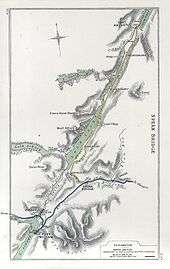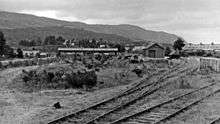Invergarry and Fort Augustus Railway
| Invergarry and Fort Augustus Railway | ||||||||||||||||||||||||||||||||||||||||||||||||||||||||||||||||||||||||||||||||||||||||||||||||||||||||||||
|---|---|---|---|---|---|---|---|---|---|---|---|---|---|---|---|---|---|---|---|---|---|---|---|---|---|---|---|---|---|---|---|---|---|---|---|---|---|---|---|---|---|---|---|---|---|---|---|---|---|---|---|---|---|---|---|---|---|---|---|---|---|---|---|---|---|---|---|---|---|---|---|---|---|---|---|---|---|---|---|---|---|---|---|---|---|---|---|---|---|---|---|---|---|---|---|---|---|---|---|---|---|---|---|---|---|---|---|---|
| ||||||||||||||||||||||||||||||||||||||||||||||||||||||||||||||||||||||||||||||||||||||||||||||||||||||||||||
Legend | ||||||||||||||||||||||||||||||||||||||||||||||||||||||||||||||||||||||||||||||||||||||||||||||||||||||||||||
| ||||||||||||||||||||||||||||||||||||||||||||||||||||||||||||||||||||||||||||||||||||||||||||||||||||||||||||
The Invergarry and Fort Augustus Railway was a branch-line railway built in Scotland, and served by the Highland Railway, the North British Railway and later the London & North Eastern Railway.
Background




The Great Glen is a natural route that runs south west from Inverness to Fort William and is used by the Caledonian Canal, and more recently the A82 road. In 1884, the Glasgow & North Western Railway proposed a line from the North British Railway's station at Maryhill, in Glasgow's northern suburbs, to Fort William, and extending this through the Great Glen to Inverness. Backed by the North British Railway, this would have reduced the distance by rail between Glasgow and Inverness from 207 miles (333 km) to 160 miles (260 km).[1] The Highland, concerned about competition from a shorter route, argued that there was insufficient traffic travelling south from Inverness for two lines, and the proposal was rejected by parliament. The Highland opposed again when the West Highland Railway later applied for a line from Glasgow to Fort William and Spean Bridge, but permission was given in 1889 and the line opened in 1894. Lines from Spean Bridge to Inverness were proposed by both the Highland and West Highland Railways in 1893, but after negotiation both companies agreed to withdraw their bills. In 1895 the West Highlands proposed building a line from Fort William to Mallaig, the Highland objecting as it would compete with their line to Strome Ferry and its planned extension to Kyle of Lochalsh on journeys to Skye. Permission was given and the North British and West Highland Railways both agreed not to sponsor any line through the Great Glen for ten years.[2] The Invergarry & Fort Augustus Railway was a local company and despite opposition, received permission in 1896 for a 24 miles (39 km) long line along the Great Glen from Spean Bridge to Fort Augustus, 30 miles (48 km) from Inverness.[3] One of the principal promoters of the line was George Malcolm of Fort William who was also active in the promotion of the West Highland Railway. The main patron was Lord Burton without whose money the project would have had no hope of getting started.
Three proposals, from the Highland, West Highland and Invergarry & Fort Augustus Railway, to extend this railway to Inverness were presented to parliament the following year, and all failed after costly litigation.[3] After costly construction the line was complete in 1901, but with no money left to buy rolling stock, the company offered the line to the North British, which was already running services through Spean Bridge station. The company proposed running services at cost, but after a request for guarantees was refused the line was offered to the Highland Railway. After fresh battles in parliament, and both the Highland and North British Railways guaranteeing that they would not seek to extend the line, the Highland Railway was given permission to operate services on the line for a payment of £4,000 a year.[4]
Services
Services started on 22 July 1903. During the summer some services ran beyond Fort Augustus to a pier on Loch Ness to connect with a steamer, but this was withdrawn in 1906. In 1907 the Highland withdrew and the North British took over until services were suspended between 31 October 1911 and 1 August 1913.[5] [6] The company advertised the disposal of the line for scrap. In spite of the fact that the local people hardly used the railway, there was an outcry at this. A public campaign was mounted in Lochaber to save the line. Meetings were held in halls and schools up and down the Great Glen. In February 1912 there was a general election where the fate of the railway became a leading issue in the highland constituencies. Eventually Inverness County Council agreed to subsidise the line and it was reopened on 1 August 1913.[7] The North British Railway bought the railway in August 1914.[8] During the 2 years the line was shut the railway company was better off financially than when it was open. There were fewer employees to pay, empty staff houses could be let and local tradesmen rented the station buildings. The railway embankments even yielded a saleable crop of grass.[9]
The North British bought the line for £27,000 in 1914.[5] The line became part of the London and North Eastern Railway after the grouping. Passenger services were withdrawn on 1 December 1933, after which a coal train ran on Saturdays.[10] During World War II there was a platform at a Royal Naval Armaments Depot (RNAD) in Fort Augustus.[11] The line closed completely on 1 January 1947.[10]
Today
Some of the line today has been built over by roads and holiday parks, although it mostly survives in a reasonably good, if overgrown, condition. The many bridges and single tunnel are in particularly good condition. Some of the line along Loch Oich has been incorporated into the Great Glen Way, and a further section is proposed to become part of National Cycle Route 78.
A restoration project is under way at Invergarry Station, the last remaining station that is largely intact. Much of the vegetation has been cleared, with repairs and renovation planned to the platform and underpass. The Invergarry Station Preservation Society plan to create a static museum, with a short length of track and several freight wagons.[12][13] In March 2015 Network Rail laid 480 ft of track to the length of platform 1. Work then commenced in constructing the replica signal cabin on the platform.
Video 125 made a video documentary about the line, using the sub-heading: The line that should have never been built.
References
Footnotes
- ↑ Vallance & Clinker (1971), pp. 47–48.
- ↑ Vallance & Clinker (1971), pp. 48–49.
- 1 2 Vallance & Clinker (1971), pp. 49–50.
- ↑ Vallance & Clinker (1971), pp. 50–51.
- 1 2 Vallance & Clinker (1971), p. 51.
- ↑ Thomas (1981). Chapter 12: The Great Glen page 203 states that closure was announced in the newspapers on 25 October 1910, giving the intended date of closure as 31 January 1911. The line was however operated until 31 October.
- ↑ Thomas & Paterson (1984), pp. 121–2.
- ↑ Awdry (1990), pp. 139–140.
- ↑ Thomas, John (1976). Forgotten Railways Scotland. David & Charles. p. 203. ISBN 0 7153 7185 1.
- 1 2 Vallance & Clinker (1971), p. 52.
- ↑ Dow, George (2001). The Story of the West Highland. Gartocharn: Famedram Publishers. ISBN 0-905489-69-1.
- ↑ "Danny Alexander backs station bid". Lochaber News. 5 April 2013. Retrieved 16 June 2013.
- ↑ "Invergarry Station Preservation Society". Retrieved 16 June 2013.
Sources
- Awdry, Christopher (1990). Encyclopaedia of British Railway Companies. Sparkford. ISBN 1-8526-0049-7.
- Thomas, John (1981). Forgotten Railways: Scotland (2nd ed.). David & Charles. ISBN 0-7153-8193-8.
- Thomas, John; Paterson, Alan J.S. (1984) [1965]. The West Highland Railway: The History of the Railways of the Scottish Highlands—Vol. 1 (3rd ed.). Nairn: David St John Thomas. ISBN 0-946537-22-4.
- Vallance, H.A.; Clinker, C.R. (1971). The Highland Railway. Pan Macmillan. ISBN 978-0-330-02720-5.
External links
| Wikimedia Commons has media related to Invergarry and Fort Augustus Railway. |